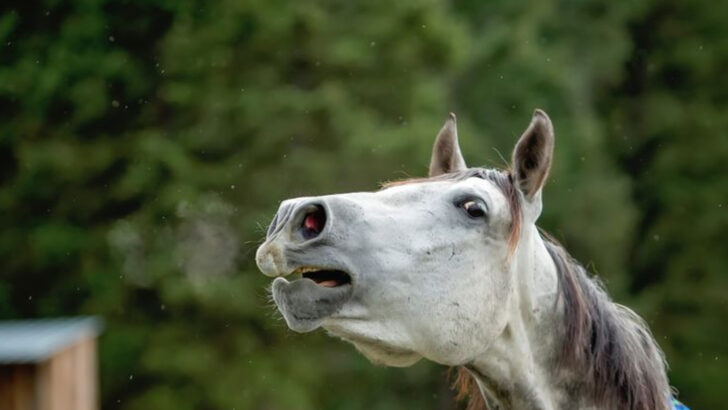Horses can read your soul before you say a single word.
These majestic creatures don’t just react to your voice or touch — they tune into the invisible waves of your emotions like living, breathing lie detectors.
They catch the tremble in your hands.
They sense the tightness in your chest.
They mirror the joy, fear, or sadness you try so hard to hide.
Forget poker faces — around a horse, your feelings are an open book flapping wildly in the wind.
And the ways they respond?
Sometimes sweet, sometimes surprising, always breathtaking.
Get ready to step into a world where a flick of an ear or a slow blink tells a deeper story than any words ever could.
Ear Movements
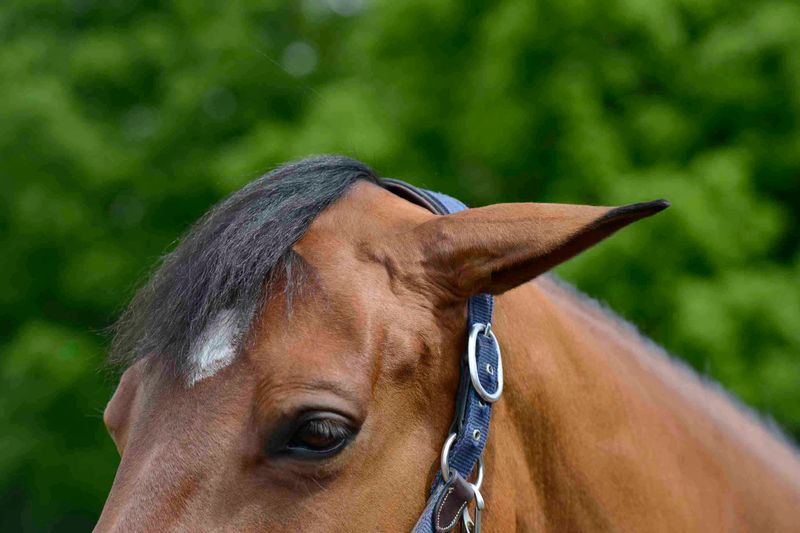
Ever notice how a horse’s ears move? These mobile appendages are more than just for hearing. When a horse’s ears swivel towards you, it’s like they’re tuning into your emotional frequency. Each tilt, turn, and twitch can indicate their curiosity about your mood. Ears pointing forward might suggest interest or happiness, while ears pinned back could hint at anxiety. It’s as if these majestic animals have their own silent language, picking up on the slightest emotional vibrations. Next time you’re near a horse, pay attention to their ear movements—they’re decoding your emotional state!
Nostrils
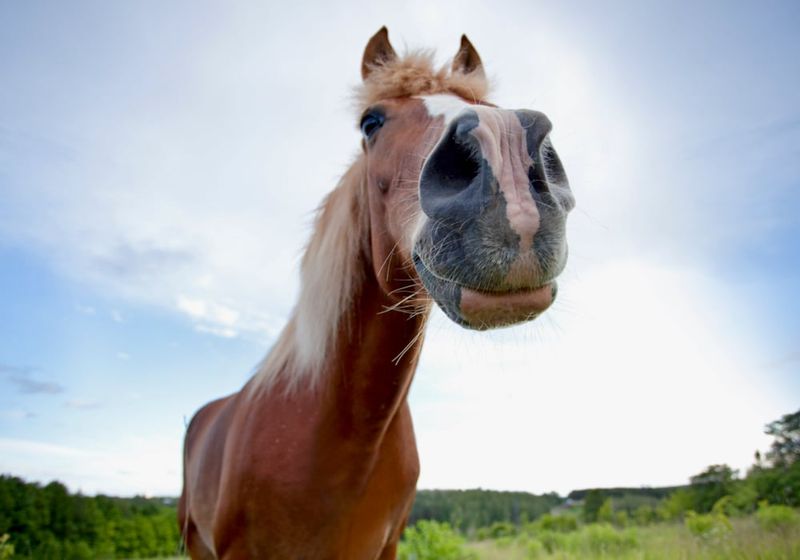
Horses have a keen sense of smell that rivals even some of the best canine sniffers. Their nostrils can detect subtle changes in human pheromones, allowing them to gauge how you’re feeling. Imagine their nostrils flaring gently, taking in the aromatic cues that accompany emotions like fear or joy. When you’re calm, they might inch closer, drawn by the serene scent. Conversely, if you’re anxious, they might keep a cautious distance. This olfactory prowess enables horses to seemingly know what you’re feeling, crafting an unseen bridge between species through scent.
Eye Contact
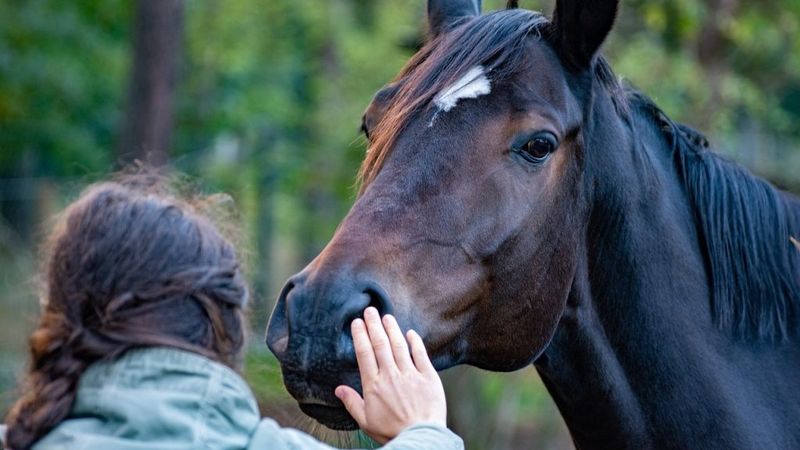
There’s something profound about a horse’s gaze, as if they see right through to your soul. When a horse locks eyes with you, it’s more than just a glance; it’s an emotional dialogue. Their large, expressive eyes can mirror your feelings, offering comfort when you’re down or reflecting your joy. Eye contact with these creatures can be soothing, like a quiet understanding passing between friends. They seem to sense trust and vulnerability through this visual connection, often responding with a calm presence that reassures and supports. Such moments highlight their depth of empathy.
Breathing Patterns
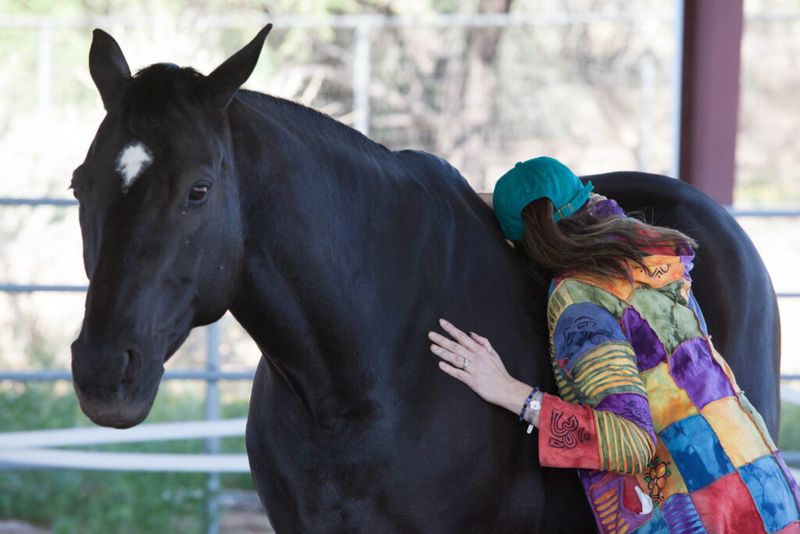
Breathing is more than a physical necessity for horses; it’s a window to their emotional world. When horses sense humans’ emotions, their breathing may subtly change. A relaxed horse might mirror your calm with slow, deep breaths. In contrast, if you’re anxious, their breathing could quicken, reflecting shared tension. This synchronization creates a tangible connection, as if their lungs are in tune with your heart. Observing and responding to these shifts can enhance your bond, revealing how deeply these empathetic creatures resonate with your emotional state. It’s a rhythmic dance of shared experience.
Body Posture

The language of posture is one that horses have mastered. Subtle shifts in their stance can indicate how they perceive your emotions. A relaxed horse, with a gentle sway and lowered head, often mirrors a similar state in you. In contrast, a tense, rigid stance can reflect your own unease or stress. Observing these physical cues is like reading a living emotional barometer. Through their posture, horses offer a wordless commentary on your mood, reflecting back what they sense. Engaging with this equine body language can deepen your understanding of each other.
Vocalizations
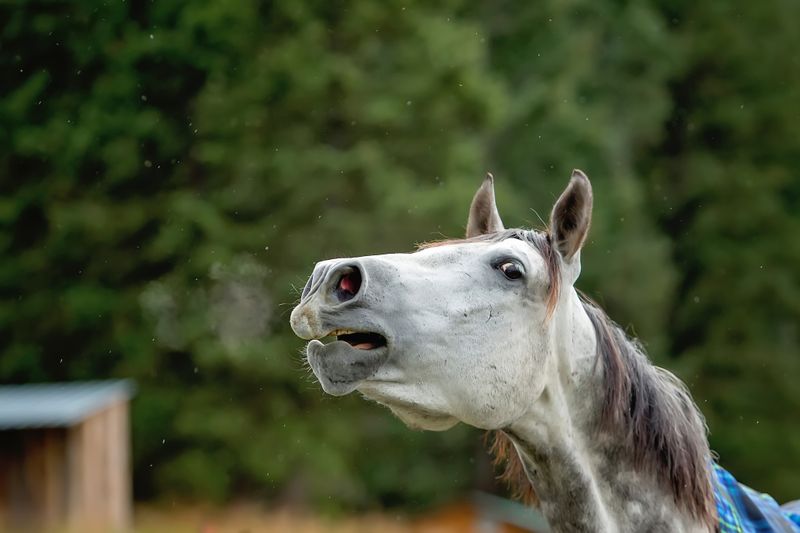
Horses communicate through a variety of vocalizations, each with its own emotional significance. From gentle nickers to loud whinnies, these sounds can resonate with the mood you’re projecting. A soft nicker might be a comforting response to your contentment, while a louder neigh could be a reaction to your excitement or anxiety. Listening to these vocal expressions allows for an enriching dialogue between species. It’s as though they’re speaking an emotional language, responding to unseen cues and offering their own reactions. Understanding this facet of equine communication can enhance your connection.
Touch Sensitivity
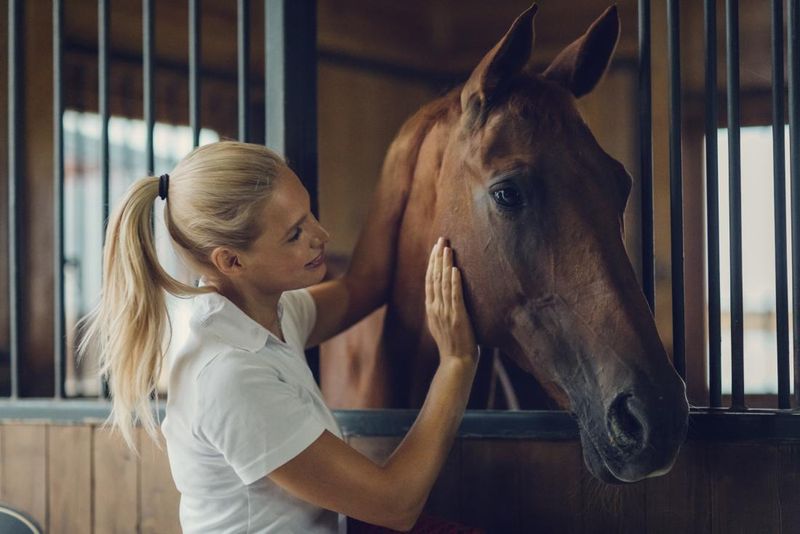
Touch is a profound communication tool between horses and humans. Their skin is incredibly sensitive, capable of detecting even the lightest touch. This tactile awareness allows them to perceive your emotions through contact. A gentle stroke might reassure them of your calm, while a firmer touch might transmit urgency or stress. This shared sensory experience fosters a unique bond, as if a silent conversation unfolds with each touch. Engaging with horses through touch can be therapeutic, reinforcing the mutual understanding and emotional resonance between you and these perceptive animals.
Facial Expressions
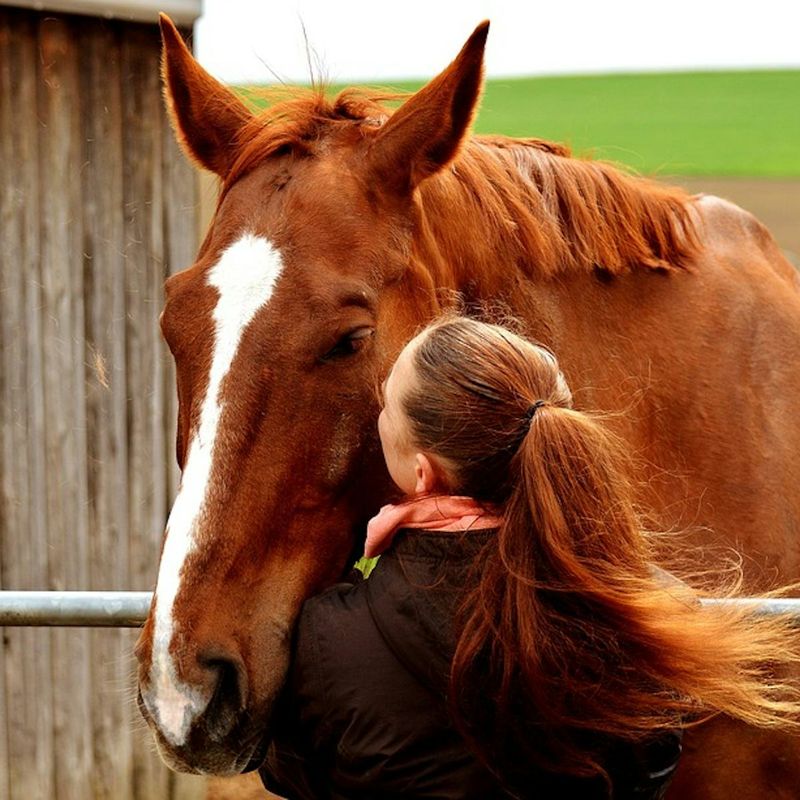
Horses are surprisingly adept at reading human facial expressions, often sensing emotions through our faces. Their ability to recognize smiles, frowns, and other expressions allows them to gauge how we’re feeling. When you smile at a horse, you might notice them becoming more relaxed and approaching with curiosity. Conversely, a tense expression may prompt them to act cautiously. This visual communication creates a bridge of understanding, as horses respond to the subtleties of human emotion with intuitive accuracy. It’s a testament to their intelligence and emotional depth.
Tail Movements

While tails might seem like mere fly swatters, they hold a wealth of emotional signals. A horse’s tail movements can reflect their response to your emotions. A slow, gentle swish might mirror calm, while rapid flicks could indicate agitation, echoing your own state of mind. Observing these movements offers insights into their perception of you. It’s like a silent dance, where each swish and flick tells a story of shared feelings. This subtle yet powerful form of communication highlights horses’ sensitivity and ability to read human emotions with grace.
Behavioral Changes
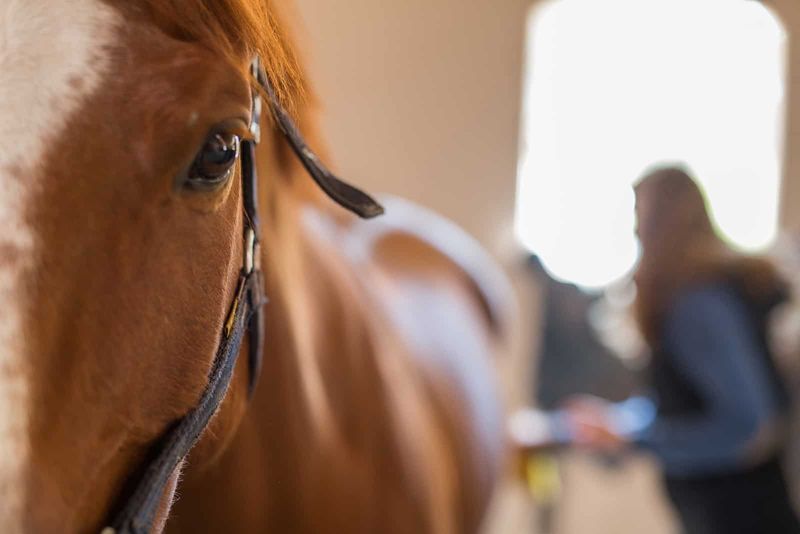
Horses often exhibit behavioral changes in response to human emotions, showcasing their intuitive nature. If you’re feeling stressed, a horse might nuzzle you gently, offering comfort and support. Alternatively, they might distance themselves if they sense anxiety, respecting your space. These behavioral shifts reflect their understanding and ability to adapt to emotional cues. It’s like having an empathetic friend who knows just what you need. Such interactions deepen the bond between horses and humans, illustrating their remarkable emotional intelligence and capacity for empathy.
Heart Rate Synchronization
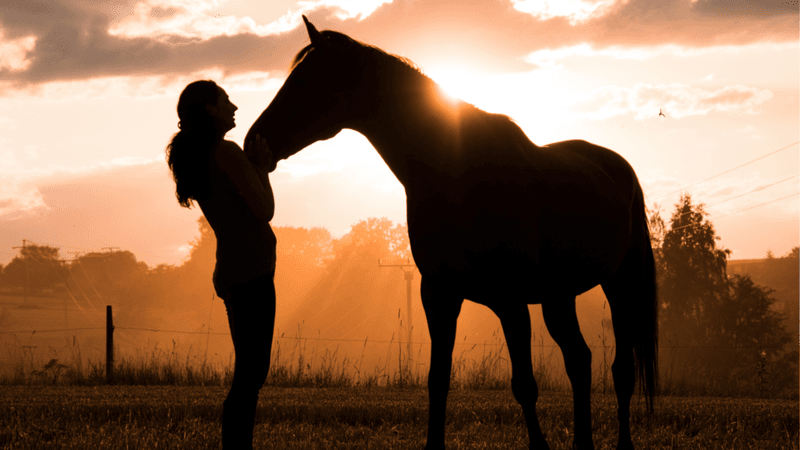
Remarkably, horses can synchronize their heart rates with humans, creating a shared physiological experience. When you’re calm, their heart rate may mirror yours, creating a harmonious rhythm between you. Conversely, tension in your emotions could result in a faster heartbeat in your equine companion. This physiological connection is a testament to the deep bond that can form between species, as if your hearts are beating in unison. It’s a magical phenomenon, highlighting the profound empathy and connection that horses share with humans through their emotions.
Mimicking
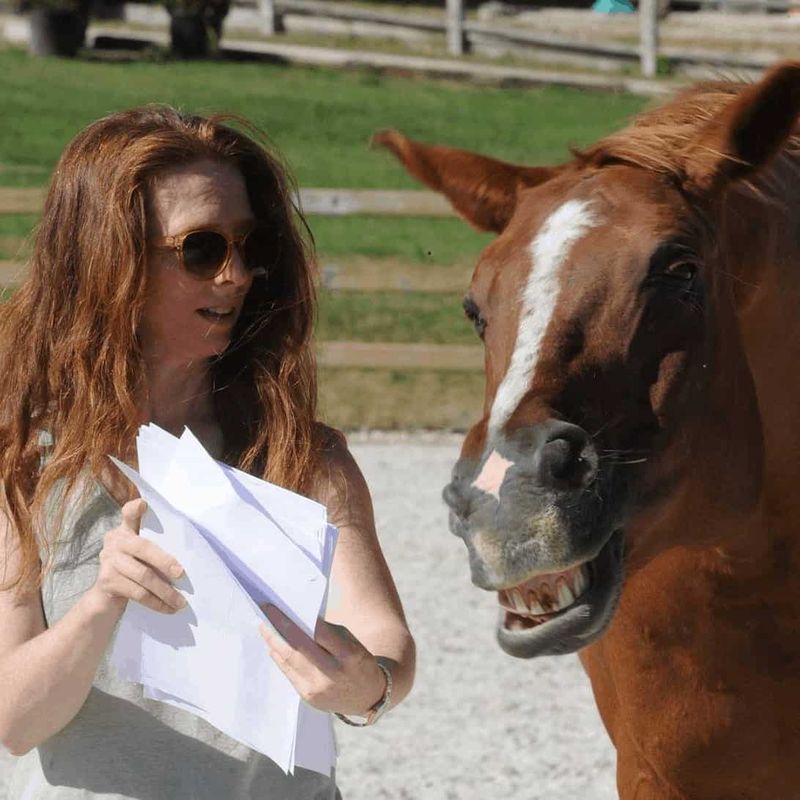
Horses are known to mimic human behaviors, a testament to their keen observational skills. If you’re playful, they might mirror your energy with spirited movements. Conversely, if you’re calm, they might exude tranquility. This mimicking behavior creates an emotional dance, where both horse and human engage in a shared experience. It’s a playful interaction that highlights their ability to understand and respond to our emotional states. Through mimicking, horses express empathy and connection, showcasing their remarkable capacity to engage with humans on an emotional level.
Environmental Awareness
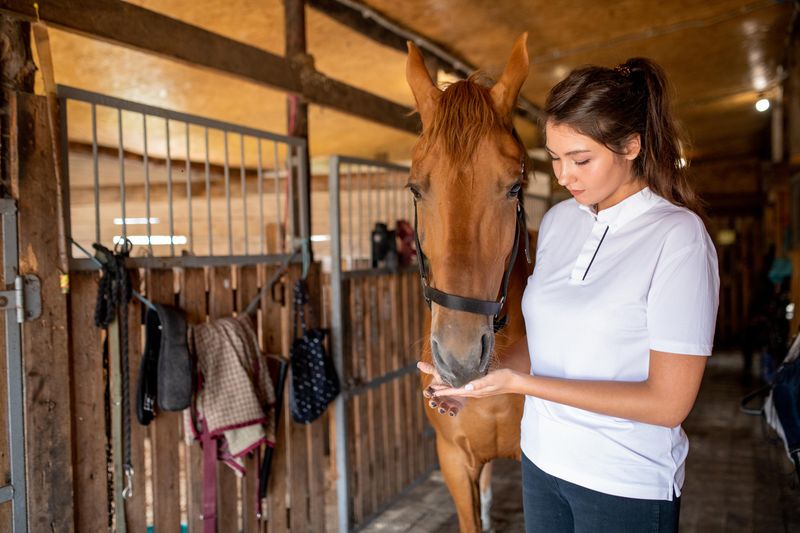
Horses are acutely aware of their environment, often responding to human emotions through changes in their surroundings. If you’re tense, they might become more vigilant, sensing potential threats. Conversely, your calm demeanor can lead them to relax, trusting in your emotional cues. This heightened environmental awareness allows horses to react in ways that reflect your emotional state, adapting to the mood you project. It’s as if they have an invisible link to your internal landscape, reflecting your feelings through their behavior and interaction with the world.
Empathetic Bonding

Empathy is a defining trait of horses, enabling them to form deep emotional bonds with humans. This empathetic connection often results in horses exhibiting behaviors that align with your feelings. When you’re sad, they might stand quietly by your side, offering silent support. If you’re joyful, they might reflect that happiness with playful antics. This bond transcends words, creating a relationship built on mutual understanding and emotional resonance. Through empathetic bonding, horses demonstrate their capacity for emotional depth, offering companionship and empathy in ways that touch the heart.

